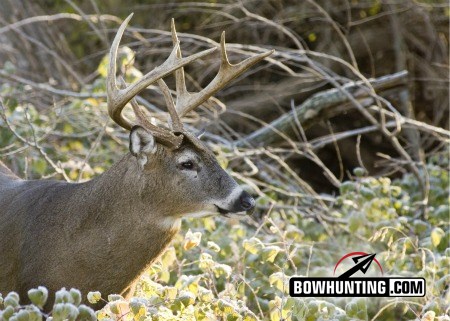LAST UPDATED: May 8th, 2015
Several weeks ago I traveled down to Branson, Missouri for the Quality Deer Management Association Deer Steward Certification course. The Deer Steward course is essentially a program that the QDMA facilitates to train, educate and certify hunters in the ways of deer, habitat and hunter management. It’s truly an incredible event and I left after three days with a tremendous amount of new knowledge and excitement. And oh by the way, certified as a Deer Steward! I was thrilled to have completed the course and be certified, and now I’m just as excited to work on my own deer hunting management plans and educate others as well! And with that goal in mind, I thought I might share a few interesting lessons I learned, particularly in regards to whitetail senses and communication. Dr. Karl Miller of The University of Georgia, one of the most recognized and esteemed whitetail biologists in America, walked us through some very interesting findings and below I’ve shared three lessons that I learned from him that might come as a surprise to you!
The tarsal gland does not actually produce a stink!
The number one sense for deer is smell and a big part of the way deer communicate is through smell as well. To produce these smells, glands on the deer’s body produce chemicals that then communicate some kind of message. Possibly the most discussed gland on a deer is the tarsal gland. As hunters, many of us have heard about the tactic of cutting off a tarsal gland and dragging it through the woods to create a scent trail. But what I didn’t know is that the tarsal gland doesn’t actually produce a scent at all! In fact, the tarsal gland only stinks because it is a great environment for a stinky materials to hang out. The smell of the tarsal gland actually comes from the fact that deer frequently urinate on their tarsal glands. Certain physical elements of the gland then work to hold that urine on the long patch of fur there and release the scent from the urine!
That dark stain on a buck’s forehead is not from rubbing trees!
Many of us have heard someone shoot a big buck and then point at the dark brown forehead, explaining that he must have been rubbing on a lot of trees! Well that just isn’t necessarily true. In fact the dark stain on a buck’s forehead during the rut is actually a result of increased secretions from something called the forehead gland. These secretions increase significantly during the rut, and they could be used to communicate a message at scrapes, although researchers aren’t sure what it actually communicates. What we do know though, is that these secretions are definitely the cause of the often noticed stained forehead!
When a buck does the lip curl, he’s not checking does for estrus!
A common misconception many folks have is that when a buck lip curls, he is checking if a doe is in estrus. This is typically called flehming or flehmen. But contrary to popular beliefs, this behavior actually does something much different. Research has found that when a buck does the lip curl, he is sucking in the scent of doe urine, but not to check for estrus. Rather the urine is pulled into something called the Vomeronasal organ, and from there a signal is passed to the buck’s brain that stimulates a physical reaction. In fact it is very similar to the reaction a human might have to something like Viagra! Essentially this process is part of a buck’s preparation for reproduction. What it does not do is tell the buck if a doe is ready to mate or not. As Dr. Karl Miller told us, the only way a buck finds that out is by whether or not the doe stands for him or runs!
For more information about the QDMA Deer Steward Courses or general deer biology, management, etc related information visit QDMA.com.






